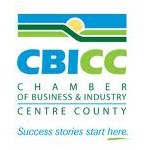“A blindfolded monkey throwing darts at a newspaper could select a portfolio that would do just as well as one carefully selected by experts.” – Burton Maikiel, from A Random Walk Down Wall Street.
This observation from Maikiel prompted the WSJ to run a Dartboard Contest to test this theory. Over a ten year period, starting in 1988 and ending in Oct 1998, there were 100 such contests in which the results of monkeys throwing darts at a stock page were compared with the results of the best and brightest of Wall Street. Slam dunk for the “pros”, right?
Not quite! The pros only won 61% of the time….quite embarrassing, wouldn’t you say. The results were even worse when compared to the Dow Jones Industrial Average (DJIA). The experts only beat the simple unmanaged DJIA 51 times out of 100. Keep in mind that over the contest period, the pros were represented by some of the biggest names on Wall Street. They had access to the best research the industry had to offer and they were giving their best picks.
There was a new article out last week in Market Watch called, “Can A Monkey Pick A Hedge Fund?” Here’s the link to the article:
http://www.marketwatch.com/story/can-a-monkey-pick-a-hedge-fund-2011-10-26
When you think of hedge funds it conjures up images of real “sophisticated” investors making tons of money working with the absolute best and brightest that Wall Street has to offer. How does that match up to reality? In a recent study, of 1300 funds-of-funds that get to pick the best hedge funds from 1994 to 2009, only 5.7% of the funds added any value on a risk adjusted basis over their benchmark. That’s right only 1 out of 20. It gets even worse….over the last 30 years; average hedge fund performance has done worse than a stock market index fund and not much better than a simple basket of treasury bonds.
All known and knowable information is already priced into the market. It’s impossible to time the market or pick winning stocks on a consistent basis. The best approach is for investors to own the whole market. The most efficient way to do this is by constructing a passive, low cost, globally diversified portfolio in accordance with your individual risk tolerance. That’s my opinion, you are welcome to it.




 Clarity Coaching Tips
Clarity Coaching Tips Common Sense Videos
Common Sense Videos It’s Your Money
It’s Your Money
